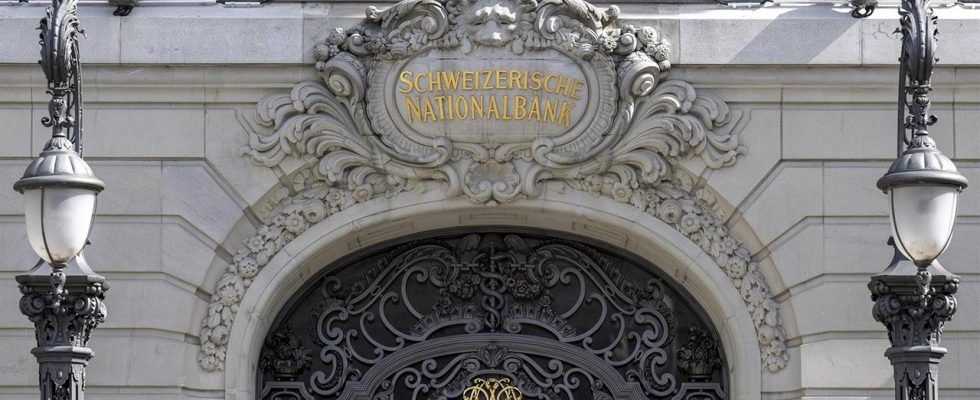The Swiss National Bank surprisingly announces a turnaround in interest rates. It was the first major central bank to unexpectedly lower its key interest rate – thereby fueling expectations that other central banks could soon follow suit.
The Swiss National Bank (SNB) has surprisingly completed a turnaround in monetary policy and lowered interest rates – the first major central bank ever to do so. The key interest rate in Switzerland is now 1.5 percent after previously 1.75 percent. It is the first interest rate cut for the SNB since 2015.
Inflation in Switzerland is on the decline
Declining inflation made this possible: annual inflation in Switzerland has been back within the SNB’s target range of zero to two percent since mid-2023. This makes it one of the lowest among major economies.
And the SNB is confident that it will stay that way: it only expects an inflation rate of 1.4 percent this year. In December it had estimated 1.9 percent. The forecast for 2025 was revised downwards from 1.6 to 1.2 percent. Inflation in Switzerland appears to be “under control,” the foreign exchange experts at Commerzbank noted that morning.
Swiss franc under pressure after interest rate cut
The reaction of the foreign exchange markets to the surprising interest rate cut by the Swiss National Bank is as quick as it is clear: the franc is coming under significant pressure in trading. The Swiss national currency has fallen to its lowest level against the euro since July. The dollar appreciates against the franc by around one percent.
SNB President Thomas Jordan explained that the interest rate decision was also a reaction to the real appreciation of the franc last year. According to experts, this has had a clear impact on the Swiss economy in recent months.
Switzerland as a pioneer?
Even though from a Swiss perspective there seem to be good reasons for the interest rate turnaround, market observers are still amazed by the SNB’s rush. “Wow, the SNB knows how to surprise,” explained VP Bank chief economist Thomas Gitzel. Economists did not see the three-member SNB board of directors around central bank chief Jordan, who was leaving in the fall, under any pressure to act on interest rates, especially since other major central banks have also recently been hesitant about turning interest rates.
“It wasn’t about being the first to act,” said SNB boss Thomas Jordan. The time was ripe. As early as June 2022, the SNB made surprising advances – at that time by raising the key interest rate – recalls Daniel Hartmann, chief economist at the Swiss asset manager Bantleon. “The SNB is therefore increasingly becoming a pioneer in the global interest rate cycle.”
ECB: Everything points to June
Most central banks have recently become more cautious again when it comes to the timing of the first interest rate cuts. For example, expectations of a first interest rate cut in the USA have been pushed further and further back in recent months. The markets are currently pricing in a first interest rate move by the Federal Reserve (Fed) for June.
With a view to the Eurozone, market observers are also expecting a first interest rate cut at the meeting of the European Central Bank (ECB) in June. In fact, European monetary authorities paved the way for such a step at their last council meeting at the beginning of March. ECB boss Christine Lagarde had implicitly named the June meeting as the point in time when sufficient data would be available to be able to assess wage dynamics with sufficient certainty.
Monetary policy Special case of Japan
In addition to the ECB and the Fed, other major central banks have also recently hesitated to initiate the interest rate turnaround. As expected, the British central bank once again did not change its key interest rate today. In view of the declining inflation, interest rate cuts are also expected on the island over the course of the year.
The situation is completely different in Japan: There, after years of negative interest rate policy, the monetary authorities are marching in the other direction. The Bank of Japan (BoJ) raised its key interest rate for the first time in 17 years on Tuesday. According to a report in the Nikkei newspaper, Japan’s central bank is considering further hikes in July or October.
In contrast to other leading industrial nations, Japan has not struggled with high inflation rates in recent years, but rather with stubborn deflation – a downward spiral of falling prices and wages that has slowed down the economy. But the inflation rate has now been above the BoJ’s target of two percent for over a year.
With information from Angela Göpfert, ARD financial editorial team

